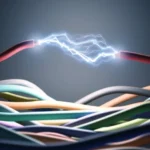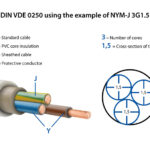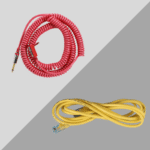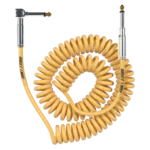Fiber Optic Cable: What It's Made Of and Why It Matters
Fiber optic cables are revolutionizing the way we transmit data, offering faster speeds, longer distances, and more reliability than traditional copper cables. Understanding what fiber optic cables are made of is key to appreciating their benefits and how they differ from other types of cables. In this article, we’ll explore the materials that make up fiber optic cables, how they work, and why they’re considered the gold standard for high-speed data transmission.
What is Fiber Optic Cable Made Of?
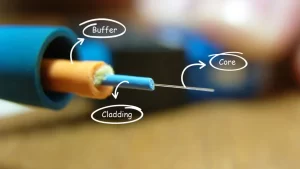
what is fiber optic cable made of
A fiber optic cable is composed of several layers, each designed to enhance the transmission of light signals over long distances. The key materials in a typical fiber optic cable are:
1. Core (Glass or Plastic)
The core is the central part of a fiber optic cable and is where the actual data transmission takes place. It’s made from either glass or plastic:
Glass Core: Most fiber optic cables use a glass core, which is the best material for transmitting light signals because it allows light to travel faster and over longer distances with minimal loss.
Plastic Core: Plastic optical fibers (POF) are made from polymer material, which is more flexible but offers lower performance in terms of speed and distance compared to glass fibers. These are often used in short-distance, low-cost applications.
The glass or plastic core is typically very thin, with diameters as small as 8 microns (about 0.008 millimeters) for single-mode fiber or around 50 microns for multi-mode fiber.
2. Cladding (Glass or Plastic)
Surrounding the core is the cladding, a layer of glass or plastic with a lower refractive index than the core. The cladding plays a critical role in reflecting light back into the core to keep the light signals from escaping, allowing them to travel down the fiber.
The refractive index difference between the core and cladding ensures that the light signals are total internally reflected, which allows for efficient data transmission. This principle is known as total internal reflection.
3. Buffer Coating
The buffer coating is a protective layer surrounding the cladding. It is typically made from a soft plastic material that cushions the fiber from physical damage, moisture, and other environmental factors. The buffer coating also helps the fiber remain flexible for installation and handling.
This layer can be single or double-coated depending on the application. The buffer ensures the fiber is resistant to scratches and abrasion during installation and use.
4. Strength Members
Fiber optic cables contain strength members made of materials like aramid yarn (e.g., Kevlar) or steel to provide mechanical strength. These strength members ensure that the cable is durable and resistant to stretching or breaking, especially in outdoor or harsh environments.
Aramid yarn (like Kevlar) is commonly used because it is incredibly strong yet lightweight, offering excellent tensile strength to protect the delicate fibers from physical damage during installation and use.
5. Outer Jacket
The outer jacket is the outermost layer of the cable, made of tough, durable materials like PVC (Polyvinyl Chloride) or LSZH (Low Smoke Zero Halogen) materials. The jacket provides protection against environmental factors like moisture, chemicals, and temperature fluctuations. It also ensures the cable is safe for use in various installations.
For cables used in harsh environments, specialized jackets are used to make the fiber resistant to fire, chemicals, UV light, and water. Outdoor cables often have more rugged jackets to protect the fibers from mechanical stress and external hazards.
How Does Fiber Optic Cable Work?
Fiber optic cables work by transmitting light signals instead of electrical signals. Here's a simplified explanation of how the light signals travel through the fiber:
Light Transmission: Light signals (usually from lasers or LEDs) are sent through the core of the fiber optic cable.
Total Internal Reflection: As the light signals hit the cladding, they are reflected back into the core due to the difference in refractive indices between the core and cladding. This phenomenon is called total internal reflection.
Data Transfer: The light bounces through the core in a continuous path, traveling with minimal signal loss and allowing data to be transferred at incredibly high speeds over long distances.
End Destination: At the other end of the fiber, the light signals are converted back into electrical signals that can be understood by devices like computers, routers, or communication systems.
Types of Fiber Optic Cables
Fiber optic cables are available in two main types, which are distinguished by the number of light paths they can carry:
Single-Mode Fiber (SMF):
Single-mode fiber has a very thin core (around 8 to 10 microns in diameter) and is designed for long-distance transmission, typically over hundreds of miles.
The light signals travel in a single path through the core, which minimizes signal loss and distortion, making it ideal for high-speed, high-performance applications like internet backbone connections and telecommunications.
Multi-Mode Fiber (MMF):
Multi-mode fiber has a larger core (typically 50 to 100 microns) and allows light to travel through multiple paths or modes within the core.
While multi-mode fiber is cheaper and easier to work with than single-mode, it is typically used for shorter distances (within a building or local area network). The light signals may bounce around more within the core, leading to signal loss over longer distances.
Advantages of Fiber Optic Cables
High-Speed Data Transfer:
Fiber optic cables are known for extremely high data transfer speeds, capable of delivering gigabits per second (Gbps) speeds, making them ideal for modern applications like high-speed internet, video conferencing, and cloud computing.
Longer Transmission Distances:
Fiber optic cables can transmit data over much longer distances than copper cables without significant signal loss or interference. This makes fiber ideal for long-distance communications, including internet backbones and undersea cables.
Immunity to Interference:
Unlike copper cables, fiber optic cables are not susceptible to electromagnetic interference (EMI). This makes fiber ideal for environments with high electrical noise or those that require secure communications, such as hospitals, military installations, and data centers.
Higher Capacity:
Fiber optics have a much higher bandwidth compared to traditional copper cables, allowing them to carry a greater amount of data. This makes fiber suitable for future-proofing networks as the demand for faster internet speeds and more bandwidth grows.
Applications of Fiber Optic Cables
Fiber optic cables are used in various applications, including:
Internet and Telecommunications: Providing high-speed broadband internet, telephone lines, and cable television.
Data Centers: Connecting servers and storage devices within data centers for efficient data transfer.
Medical Equipment: Used in medical devices like endoscopes and imaging systems.
Military and Defense: Ensuring secure and reliable communications in military operations.
Conclusion
Fiber optic cables are a key technology that enables high-speed, high-capacity data transmission. Made of materials like glass or plastic cores, cladding, and protective outer jackets, these cables offer advantages such as long transmission distances, resilience to interference, and exceptional bandwidth. Whether you are considering fiber optics for home internet, data centers, or telecommunications, fiber optic cables provide the future-proof solution for high-performance and high-speed networks.
If you're planning to upgrade your network or need more information on how fiber optics can benefit your setup, feel free to ask for additional guidance!

